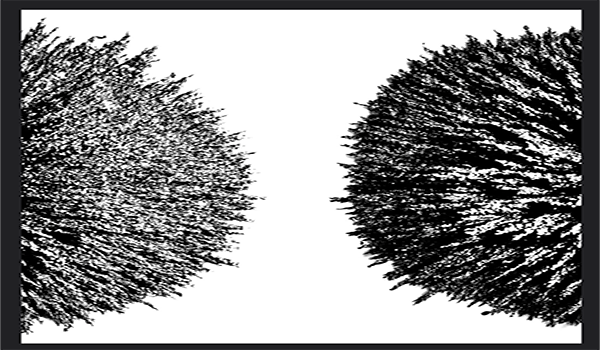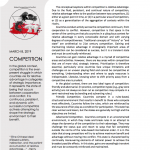SMA Quick Concepts Series: Competition

Quick Concept: Competition
Authors | Editors: LTC D. Doran & J. Stevenson (NSI, Inc).
Executive Summary
The conceptual keystone within competition is relative advantage. Due to the fluid, persistent, and continual nature of competition, relative advantage refers to the position between two competitors, (1) either at a given point in time, or (2) in a particular area of competition, or (3) as a generalization of the aggregation of contests within the rivalry.
Countries conduct activity across the competition continuum, from cooperation to conflict. However, competition is that space in the center of the continuum that pits countries in a ubiquitous contest for relative advantage in every conceivable domain and with varying degrees of competitiveness. Traditional concepts of “victory” or “end state” are antithetical to 21st century competition. Gaining and maintaining relative advantage in strategically important areas of competition can be considered as success, but it is a transient state and must be continually reinforced.
Countries can gain relative advantage in a myriad of competitive areas and activities. However, there are key areas within competition that are of more vital, strategic interest. Prioritization is therefore essential, particularly since countries face unique limitations and challenges on an uneven playing field and cannot be competitive at everything. Understanding when and where to apply resources is indispensable. Likewise, knowing when to shift priority away from a competitive area is prudent.
In the global context, there are two ideal types of competition: friendly and adversarial. (In practice, competition types [e.g., gray zone activity] are not always so clear cut as competitors may compete in a semi-restrained way by bending and subverting rules.)
Friendly Competition. Countries compete in a rules-based, structured environment that results in benefit to those who compete most effectively. Countries follow the rules, which are reinforced by the assurance of fair play as a condition for participation. This state has clear winners and losers, but the stakes are generally not high and the objectives are limited.
Adversarial Competition. Countries compete in an unconstrained environment, in which they make and break rules in an attempt to shape the dynamics of the competition to their advantage. They may challenge the status quo and resort to ways that fall completely outside the norms of the rules-based international order. It is in this state that strong competitors will try to achieve maximum benefit and advantage without moving into conflict. This state is characterized by continually maneuvering elements of national power to achieve the broadest possible effects. In this state, gains are exceedingly transient and must be constantly reinforced and maintained.

Comments